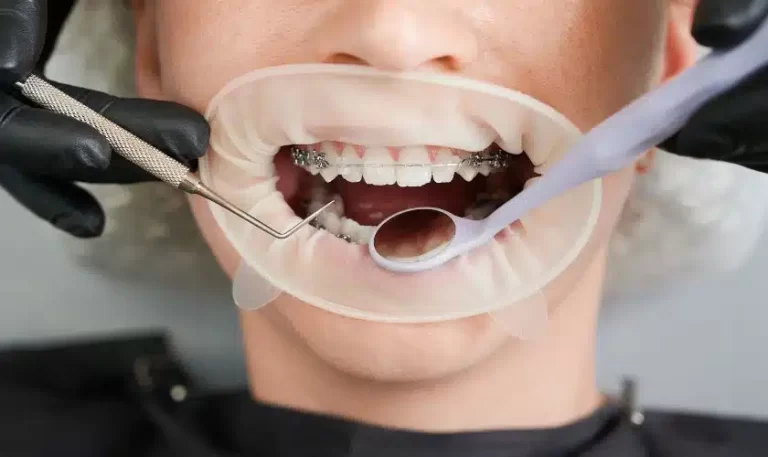Achieving a youthful, rejuvenated appearance is more accessible than ever, thanks to advanced face lifting treatments. These treatments are designed to tighten the skin, restore a firmer look, and enhance facial contours without resorting to surgical interventions. In this article, we will explore the latest non-surgical face lifting treatments, their benefits, and the considerations you should keep in mind when choosing the best option for your skin.
What Is Face Lifting Treatment?
Face lifting treatment refers to a range of non-surgical procedures aimed at lifting and tightening the skin, resulting in a more youthful and contoured facial appearance. These treatments work by stimulating the production of collagen and elastin, the essential proteins responsible for maintaining skin firmness and elasticity. By targeting specific areas of the face, these treatments effectively reduce the appearance of sagging skin, fine lines, and wrinkles, giving you a smoother, more refreshed look.
Benefit 1: Achieve a Youthful Appearance with Natural-Looking Results
One of the primary benefits of face lifting treatments is their ability to provide natural-looking results. Unlike surgical options, which can sometimes lead to an unnatural or “overdone” appearance, non-surgical face lifting treatments enhance your natural beauty by gently lifting and tightening the skin. These treatments work in harmony with your skin’s natural processes, stimulating collagen production to restore a firmer, more youthful look without altering your facial structure.
Treatments such as HIFU (High-Intensity Focused Ultrasound) are particularly effective in achieving these results. HIFU works by delivering focused ultrasound energy to the deeper layers of the skin, triggering a regenerative response that leads to tighter, lifted skin. The results are gradual, building over time as the skin continues to produce collagen, ensuring that the final outcome looks entirely natural.
Benefit 2: Long-Lasting Results Without Downtime
Another significant advantage of face lifting treatments is their ability to deliver long-lasting results with minimal downtime. Many non-surgical face lifting treatments, such as RF (Radiofrequency) and HIFU, require little to no recovery time, allowing you to return to your daily activities immediately after the procedure. This makes them an ideal choice for those with busy lifestyles who want to achieve noticeable improvements in their appearance without taking time off work or disrupting their daily routines.
The longevity of the results varies depending on the specific treatment and individual skin type, but most patients enjoy the benefits for several months to over a year. Regular maintenance sessions can further prolong the effects, helping you maintain a youthful appearance with minimal effort.
Benefit 3: Safe and Effective with Minimal Risks
Non-surgical face lifting treatments are generally considered safe and effective, with minimal risks and side effects compared to surgical procedures. The techniques used in these treatments, such as HIFU, RF, and microcurrent therapy, are non-invasive and do not require incisions, anesthesia, or lengthy recovery periods. This significantly reduces the risk of complications, such as infection, scarring, or adverse reactions.
Furthermore, these treatments are tailored to the individual’s skin type and specific concerns, ensuring that you receive the most effective and personalized care. Side effects, if any, are usually mild and temporary, such as slight redness or swelling, which typically resolves within a few hours to a couple of days.
Treatment Options: Exploring the Latest Face Lifting Techniques
When it comes to face lifting treatments, there are several advanced options available that can help you achieve your desired results. Here’s a closer look at some of the most popular non-surgical face lifting techniques:
HIFU (High-Intensity Focused Ultrasound)
HIFU is a cutting-edge treatment that uses focused ultrasound energy to target the deeper layers of the skin. By stimulating collagen production, HIFU tightens and lifts the skin, resulting in a firmer, more youthful appearance. The treatment is particularly effective for sagging skin around the jawline, cheeks, and neck. HIFU is a non-invasive procedure with no downtime, and results continue to improve over several months as new collagen is produced.
RF (Radiofrequency) Skin Tightening
RF skin tightening is another popular face lifting treatment that uses radiofrequency energy to heat the deeper layers of the skin, stimulating collagen production. This treatment is effective for reducing the appearance of fine lines, wrinkles, and sagging skin, particularly around the eyes, forehead, and cheeks. RF treatments are non-invasive, painless, and require no downtime, making them a convenient option for those looking to enhance their appearance without surgery.
Microcurrent Therapy
Microcurrent therapy is a non-invasive treatment that uses low-level electrical currents to stimulate the facial muscles and skin, promoting collagen and elastin production. This treatment is often referred to as a “non-surgical facelift” because of its ability to lift and tone the facial muscles, resulting in a more youthful and sculpted appearance. Microcurrent therapy is particularly effective for improving the contour of the jawline and cheeks and can be combined with other treatments for enhanced results.
What to Remember When Choosing a Face Lifting Treatment
When considering a face lifting treatment, it’s essential to keep a few key factors in mind to ensure you achieve the best possible results. First, consult with a qualified and experienced practitioner who can assess your skin type and recommend the most appropriate treatment for your specific concerns. Each face lifting treatment has its unique benefits and may be more suitable for certain skin types or areas of concern.
It’s also important to have realistic expectations regarding the results. While non-surgical face lifting treatments can provide significant improvements in skin firmness and contour, they may not achieve the same dramatic results as surgical procedures. However, they offer a safer and more convenient alternative with natural-looking outcomes and minimal risks.
Finally, consistency is key to maintaining the results of your face lifting treatment. Regular follow-up sessions and a good skincare routine can help prolong the effects, keeping your skin looking firm, lifted, and youthful for longer.
Conclusion
Advanced face lifting treatments offer a safe, effective, and non-invasive way to lift and tighten the skin, resulting in a more youthful and rejuvenated appearance. With options like HIFU, RF, and microcurrent therapy, you can achieve natural-looking results without the need for surgery or downtime. By carefully considering your options and working with a skilled practitioner, you can lift your look and enjoy long-lasting, beautiful results that enhance your natural beauty.















